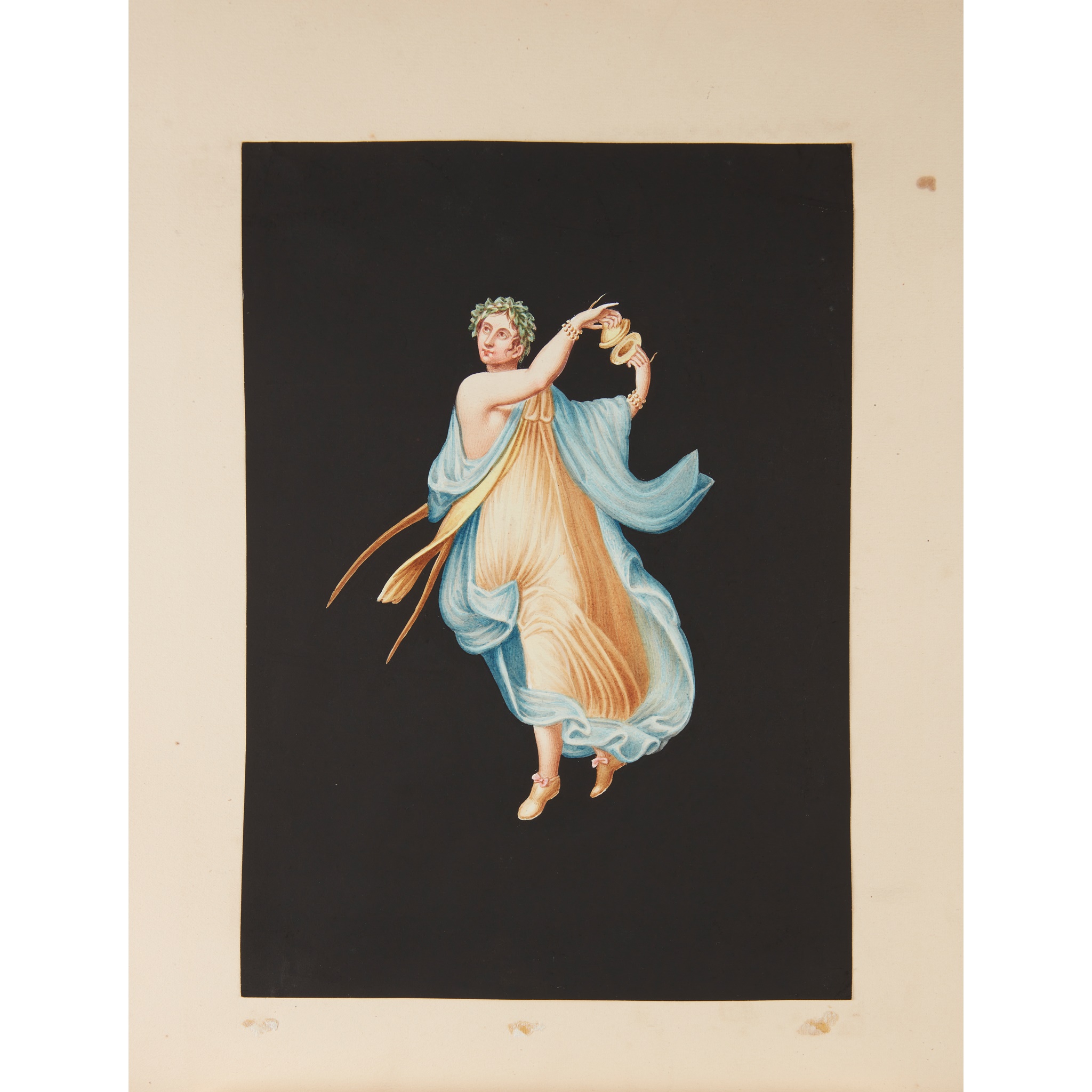Pompeii and Herculaneum
Mosaics and paintings, an album of painted copies
£1,764
Rare Books, Manuscripts, Maps & Photographs
Auction: 21 September 2023 at 10:00 BST
Description
Mid-19th century, comprising 48 watercolour and egg tempera paintings each laid down onto an album leaf, including a scene of an animal sacrifice and serpents from a larium, cupids at work and play and a cat and quail mosaic from the House of the Faun (with the caption 'Mosaico Museo Borbonico', the name of the National Archaeological Museum in Naples until 1861), and three albumen prints at the rear of the album, album 38 x 28.5cm, 19th century green half morocco with manuscript paper label to spine
Footnote
Note: About one in the afternoon, my mother pointed out a cloud with an odd size and appearance that had just formed. From that distance it was not clear from which mountain the cloud was rising, although it was found afterwards to be Vesuvius. The cloud could best be described as more like an umbrella pine than any other tree, because it rose high up in a kind of trunk and then divided into branches. I imagine that this was because it was thrust up by the initial blast until its power weakened and it was left unsupported and spread out sideways under its own weight. Sometimes it looked light coloured, sometimes it looked mottled and dirty with the earth and ash it had carried up. [Pliny the Younger VI:16]
Pliny the Younger's accounts of the eruption of Vesuvius reflect the terror encountered by the residents of Pompeii, Herculaneum and the surrounding villages in the Autumn of 79AD. The towns were, in fact, never named in Pliny's texts, and their exact location was unknown until 1709, when a worker building a well hit several artefacts from the town of Herculaneum. Excavations began and continued throughout the 18th century. Following minor discoveries in 1592 and 1689, excavations at Pompeii were underway from the mid-18th century. Vesuvius became an almost-mandatory stopping point on the Grand Tour, and the excavations added fuel to the mounting interest in the Classical world in the 18th century, inspiring the Neo-Classical movement.
The present album dates from the mid-late 19th century (the final painting is captioned Mosaico Museo Borbonico, existing in this form from 1816-1861) and is likely to be a product of the Grand Tour. The paintings are finely made and have not been disturbed since they were placed into the album. It is possible that they were purchased as ready-made paintings for the tourist market, or that they were painted by a finely skilled tourist themself.

